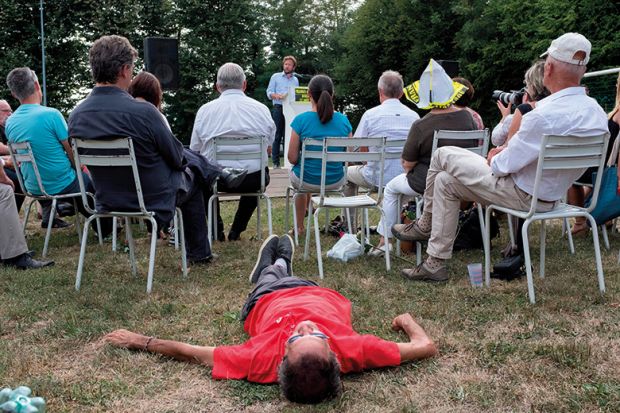Keep it brief
Some meetings are more marathon than sprint but a sensible rule is that if you need sustenance, you’re probably doing something wrong. All the evidence that we draw on when discussing student learning should apply equally to meetings. Attention drops off after a relatively short period of time and meetings that drag on don’t produce high-quality outcomes.
Think carefully about those items that need high-quality thinking from others in the room. Put these at the top of the running order so that they benefit from all that expensively assembled wisdom. Consider the running order in terms of who speaks and in which sequence. The same speaker for multiple items produces a sense of items blending. Some attendees will talk (often at length, often with disingenuous proviso that they’ll make their contribution brief); others will appear to be meditating rather than meeting.
Think about cost
Bigger meetings are more important, at least from an economic standpoint. Why? Calculate the salary cost associated with having that number of people sitting around for a couple of hours.
Despite these costs, when a large number of academics are gathered in one place for a formal meeting it is easy to lose sight of the purpose being pursued. Most of the people attending will have a pile of other pressing concerns that they’re actually dealing with via their smartphone, tablet or laptop, while operating under the pretence of wanting to go paperless.
For those parts of the agenda that are more bemusing, ask yourself this philosophical question: “If a decision is chopped down and no one hears it, does it make a sound?” Unless your intention is to provide tea, biscuits and warm shelter for a few hours, ration the time that you spend together because it is costing you a fortune.
Avoid ‘room meat’
At larger set-piece meetings, many people sit in silence throughout. A key question then is, what purpose does their attendance serve?
Nobody is particularly motivated to attend meetings when they are clearly what Armando Iannucci’s 2009 film In the Loop calls “meat in the room”. Either cut the number of people who need to be there or change the format so that most people get an action to follow up on in your notes.
Beware, too, those who treat meetings as a platform to pontificate on favoured topics regardless of the agenda. As a skilful chair, you should try to ensure equal access to the airtime available, and this could involve resisting attempts to move off-piste.
Do you need a minute-taker?
Those who take the minutes have the opportunity to shape both history and the future. However, where possible, be a rebel and don’t produce minutes. Think about whether you want to rely on someone else to produce acres of verbiage that neither you nor those attending can recall months later.
Instead, make a short action note for the meeting while it is happening. Do it yourself and circulate it within 48 hours. You’ll have saved time, crafted a reasonably accurate record of the actions and ensured that your colleagues know what they’re supposed to have done by the time you next meet.
And write the note mindful of the fact that you plan to post it on the intranet so that everyone can see it.
Learn from high society
Academic work can be lonely but it is almost always busy. It is also increasingly the case that the only time you might bump into colleagues from across the institution is during a meeting.
With this in mind, you’ll probably find that more useful business is being conducted in the margins than in the meeting itself. Take this on board and mimic the style of a society ball with a start time of, say, 2pm for 2.30pm. Attendees can turn up on time or go early and network. The informal time could help make the meeting itself shorter.
Then, follow the advice above to make sure that even the formal meeting feels like an opportunity to network. If most people in the room are contributing, value the business being done and can tell that you’re not wasting their time, they may even enjoy the process and you’ll almost certainly be asked to chair meetings more often.
Robert MacIntosh is head of the School of Social Sciences at Heriot-Watt University. He writes regularly about academic life on the Heriot-Watt blog thePhDblog.com.
后记
Print headline: For better meetings, trim the ‘room meat’




